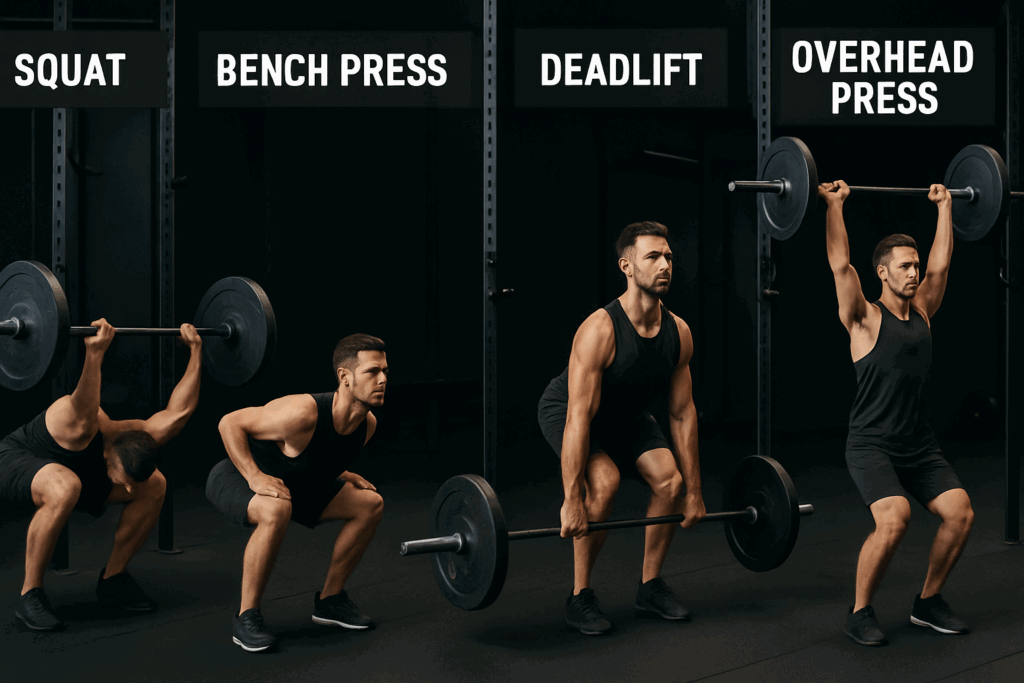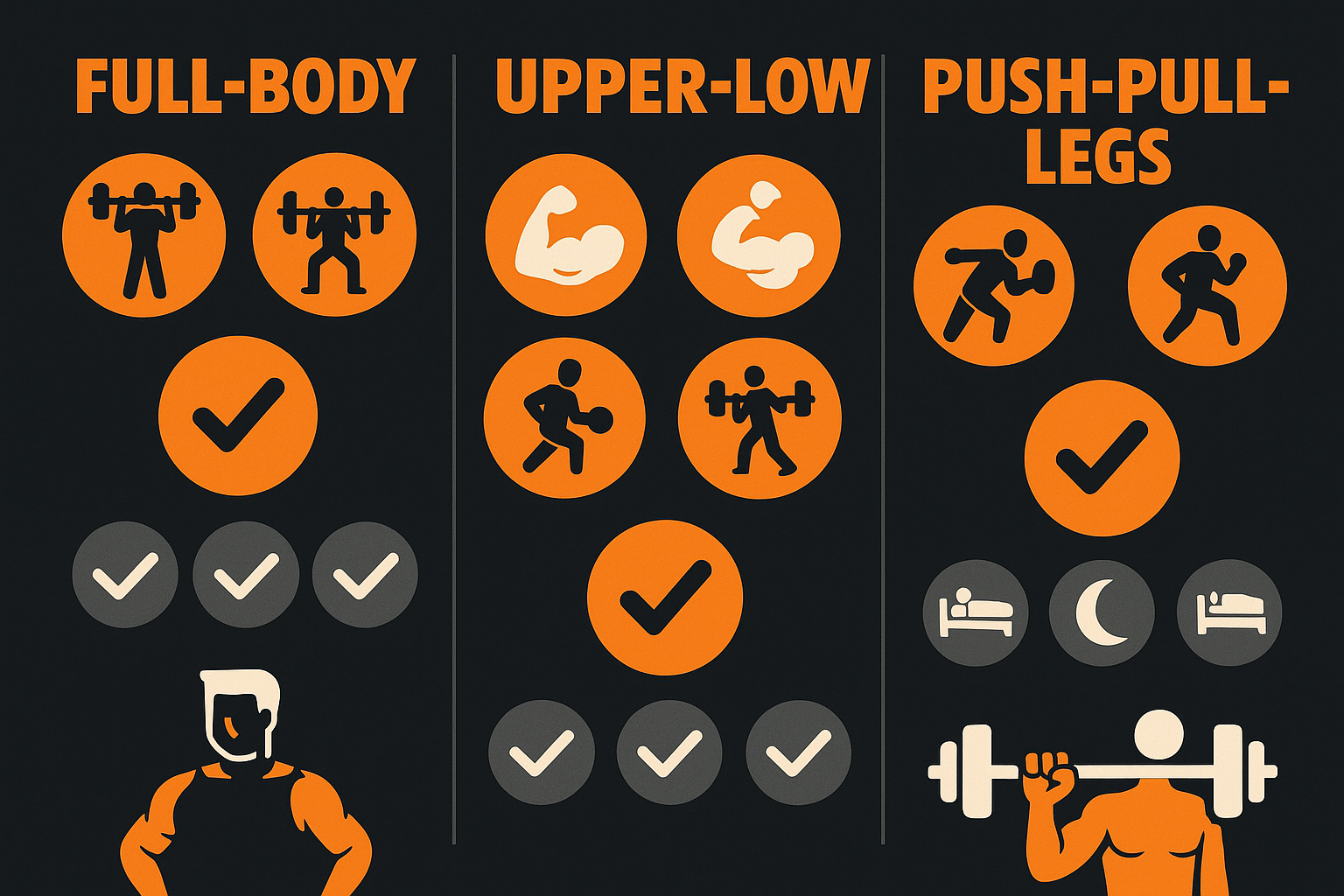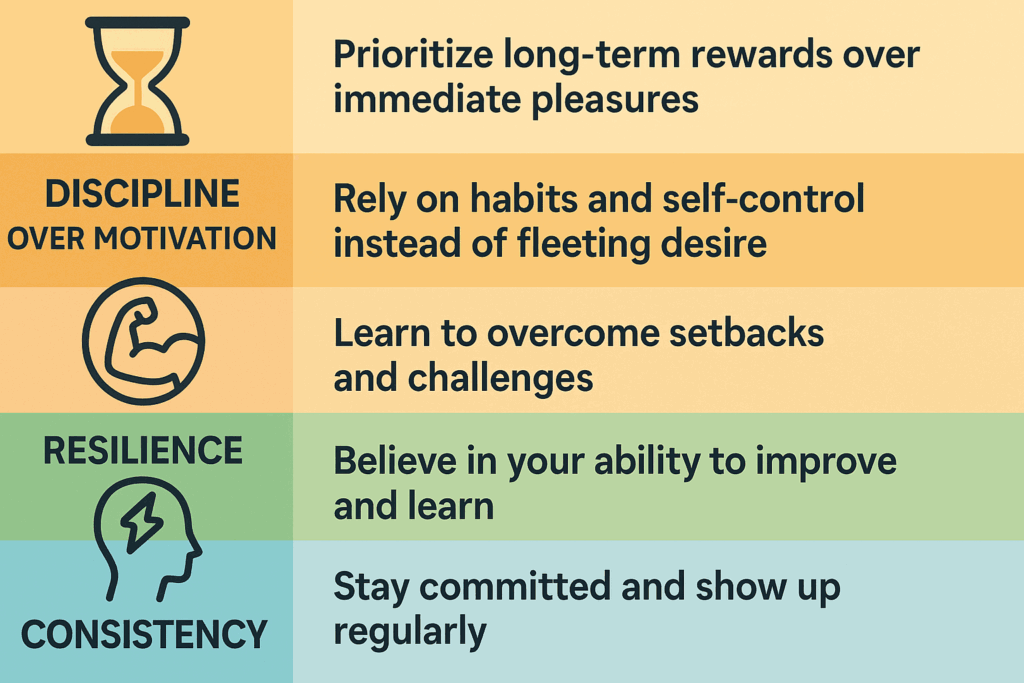The Journey Begins: Observing the Everyday Guy Working Out at Gym
The gym is not just a room filled with machines and free weights. It is a microcosm of transformation, effort, and discipline. Every individual who walks into the facility brings with them a story, a goal, and a certain kind of resilience. Among them, a guy working out at gym often epitomizes the blend of consistency, technique, and ambition. His routine, while appearing simple on the surface, often hides complex layers of planning, understanding of physiology, and self-discipline. Observing such a person is like studying a living textbook on functional fitness and strength training principles in action. His progress offers not only inspiration but tangible strategies that can be replicated with careful intention.
In this article, we delve into the nuanced practices, mindsets, and techniques that drive strength development from a real-world, experience-based perspective. We are not talking about elite bodybuilders or genetic outliers but a relatable man working out in gym settings consistently, efficiently, and with visible results. The habits and practices explored here reflect the distilled essence of years of trial and error, informed by science yet shaped by practical lived experience. Whether you’re a newcomer or looking to refine your training, the proven insights from this article will illuminate a powerful path forward.
You may also like: The Ultimate 30-Day Workout Plan for Men Working Out in the Gym: Proven Full Body Strength Exercises to Maximize Results
Establishing a Strong Foundation with Strength Training Basics
For any meaningful gains in strength, one must begin with a robust foundation. The fundamentals of strength training revolve around movement patterns, progressive overload, recovery, and nutrition. A guy working out at gym regularly understands that strength isn’t built overnight and that mastering form takes precedence over lifting heavier weights. Compound movements such as the squat, deadlift, bench press, and overhead press form the pillars of effective routines because they recruit multiple muscle groups and simulate real-life movements.
An essential first step in establishing a strong foundation is to understand one’s body mechanics. Everybody has a unique structural alignment, flexibility range, and muscular strength. Correct form helps prevent injuries and ensures the targeted muscles are being engaged effectively. Beginners often benefit from working with a trainer initially or recording themselves to critique their form objectively.
Progressive overload is another critical concept. It involves gradually increasing the resistance or intensity of exercises over time, forcing the muscles to adapt and grow stronger. A smart progression plan avoids sudden jumps that could lead to strain or fatigue. Tracking workouts, monitoring strength gains, and adjusting volume and intensity accordingly are hallmarks of a seasoned gym-goer’s approach.
Rest and recovery are often overlooked but play a vital role in the muscle-building process. Without adequate sleep and rest days, the body doesn’t have enough time to repair the microtears that result from lifting weights. This repair process is what leads to muscle hypertrophy and strength enhancement. Lastly, fueling the body with a protein-rich, balanced diet ensures that the muscles have the raw materials they need for repair and growth.

Proven Programming Strategies from a Guy Working Out at Gym
The most effective strength routines are not arbitrary—they are built on proven programming principles. A guy working out at gym with consistent results typically follows a structured training split, often cycling through phases of strength, hypertrophy, and deloading. For example, many opt for upper-lower splits, push-pull-legs routines, or full-body workouts depending on their recovery capacity and schedule.
Periodization is a powerful technique where training variables such as intensity, volume, and exercise selection are manipulated across weeks or months. Linear periodization, where weights increase and reps decrease gradually, is ideal for beginners. More advanced lifters might use undulating or conjugate periodization for sustained progress and to avoid plateaus. Each cycle should have a clear purpose and measurable goals.
Another crucial principle is specificity. If you want to get stronger at deadlifting, you need to deadlift or perform closely related accessory movements like Romanian deadlifts or rack pulls. While cross-training and variety can keep routines interesting, too much novelty can derail progress. A man working out in gym settings who achieves consistent strength gains typically adheres to a focused plan, revisiting core lifts regularly while incorporating strategic accessory work to address weak points.
Auto-regulation, or adapting the day’s training based on how one feels, is another sophisticated approach seen in seasoned lifters. Not every day is equal in energy or motivation, and listening to your body can prevent overtraining and maximize performance on strong days. Tracking metrics such as Rate of Perceived Exertion (RPE) or using velocity-based training tools can help fine-tune this approach.

Why Recovery and Sleep Matter More Than You Think
One of the most underappreciated components of strength development is recovery. No matter how intensely a person trains, real progress is only made during rest. The guy working out at gym who appears to gain strength effortlessly is often the same person who prioritizes sleep, hydration, and active recovery practices. The physiological stress of lifting triggers muscle breakdown; recovery provides the conditions for adaptation and growth.
Quality sleep is perhaps the most potent recovery tool. Deep sleep stages are when the body releases growth hormone, repairs tissues, and consolidates motor learning. A consistent sleep schedule—ideally 7–9 hours per night—can significantly impact strength gains and performance. Additionally, napping, if possible, can provide a further boost, particularly for those training in the early morning or late evening.
Hydration is another vital aspect often overlooked. Muscles are composed largely of water, and even mild dehydration can impair performance, reduce focus, and increase the risk of injury. Adequate water intake before, during, and after workouts keeps joints lubricated and maintains cellular function necessary for recovery.
Active recovery—such as light cardio, stretching, foam rolling, or even yoga—can enhance blood flow, reduce soreness, and accelerate muscle repair. Strategic use of rest days doesn’t mean doing nothing; it means engaging in low-intensity activities that complement high-intensity training. This balance allows the nervous system and musculoskeletal system to recalibrate effectively.

Optimizing Nutrition for Strength and Muscle Repair
Nutrition is the cornerstone of any successful strength program. What you eat directly influences how well your body performs in the gym and how quickly it recovers afterward. For a guy working out at gym with consistency, meal planning and macronutrient tracking become second nature. Protein intake, for example, is critical because it provides the amino acids necessary for muscle repair and growth.
The general guideline for protein consumption in strength athletes is around 1.6 to 2.2 grams of protein per kilogram of body weight daily. High-quality sources such as lean meats, eggs, dairy, legumes, and protein supplements help meet these targets. However, protein alone isn’t sufficient. Carbohydrates play a crucial role in refueling glycogen stores depleted during resistance training. Complex carbs like oats, brown rice, and sweet potatoes offer sustained energy and support recovery.
Fats, while often misunderstood, are essential for hormone production, including testosterone—a key player in muscle synthesis. Incorporating healthy fats from sources like avocados, nuts, seeds, and olive oil supports overall health and long-term strength development. Timing also matters. Pre-workout meals should provide easily digestible energy, while post-workout nutrition should prioritize protein and carbs to kickstart recovery.
Micronutrients should not be ignored. Vitamins and minerals like magnesium, zinc, vitamin D, and B-complex support muscle contractions, energy production, and immune health. In some cases, targeted supplementation can bridge dietary gaps, especially in individuals with restrictive diets or higher nutrient demands.

Mindset Shifts That Make Strength Gains Sustainable
Beyond the sets, reps, and meal plans lies a powerful determinant of success: mindset. What sets apart a man working out in gym every week for years from someone who gives up after a few months is not necessarily genetics or access to better equipment—it’s mental resilience and a growth-oriented mindset. Understanding that strength is a long-term investment changes how one approaches the process.
One key mindset shift is embracing delayed gratification. Strength development is incremental. While there may be visible progress in a few weeks, significant gains take months or even years. This requires patience and the ability to celebrate small wins—like improved form, new personal bests, or increased energy levels—as milestones worth recognizing.
Another important attitude is self-discipline over motivation. Motivation is fleeting and unreliable. It ebbs and flows based on external factors. Discipline, on the other hand, means showing up regardless of mood, weather, or convenience. The guy working out at gym early every morning or late after work doesn’t rely on feeling motivated—he relies on a deep-rooted commitment to his goals.
Resilience also plays a role, especially when setbacks occur. Injuries, plateaus, and life disruptions are inevitable. Viewing these as temporary hurdles rather than permanent failures ensures continued progress. Successful lifters adapt their routines, seek help when needed, and maintain a flexible but determined approach.

Key Training Techniques Used by Every Experienced Guy Working Out at Gym
The seasoned lifter employs a variety of techniques to stimulate growth and prevent stagnation. Among these are tempo manipulation, rest-pause training, and drop sets—all designed to maximize time under tension and promote muscle recruitment. These advanced techniques can break plateaus and accelerate strength adaptation.
Tempo training involves controlling the speed of each phase of a lift—eccentric (lowering), isometric (pause), and concentric (lifting). Slowing down the eccentric portion, for example, can increase muscle damage and time under tension, leading to greater hypertrophy. Rest-pause training introduces short intra-set breaks to squeeze out additional reps, pushing muscles beyond their usual limit without compromising form.
Drop sets are a favorite among many lifters because they allow for extended volume within a single exercise. By reducing the weight after failure and continuing the set, muscles are forced to adapt to cumulative fatigue. These techniques are best used sparingly and strategically to avoid overtraining but can be instrumental in stimulating new gains.
Another vital component is core engagement and stabilization. Regardless of the exercise, bracing the core ensures better force transfer and protects the spine. Exercises like planks, Pallof presses, and loaded carries complement traditional lifts and build the foundation for more complex movements.
Lastly, mobility work cannot be overstated. A man working out in gym environments consistently who moves fluidly and pain-free likely invests time in joint mobility and soft tissue care. Dynamic warmups, banded stretches, and trigger point release can improve range of motion and prevent chronic injuries.

Tracking Progress Like a Guy Working Out at Gym with a Plan
Progress without documentation is often short-lived. Keeping a detailed training log is one of the most effective habits a serious gym-goer can adopt. This doesn’t just include weights lifted or sets completed but also how one felt during the session, sleep quality the night before, and even stress levels. Patterns emerge over time, offering clues for future adjustments.
By regularly measuring key performance indicators—such as one-rep maxes, rep PRs, and even body measurements—a lifter can objectively assess whether they are progressing. Strength plateaus are easier to diagnose when data is available, making it easier to implement solutions like increased volume, technique tweaks, or even strategic rest weeks.
Technology can aid this process. Mobile apps, wearable fitness trackers, and spreadsheets can organize data efficiently. For a guy working out at gym with clear intentions, these tools act as accountability partners and feedback mechanisms. Even videos of lifts can serve as valuable resources for visual self-correction and form analysis.
In addition to physical metrics, tracking mental and emotional trends can offer insights into motivation cycles. Some weeks may be more stressful or demanding; adjusting training to reflect these realities ensures long-term sustainability. Logging both objective and subjective measures leads to a comprehensive understanding of one’s journey.

Frequently Asked Questions
1. How Can a Guy Working Out at Gym Overcome Strength Plateaus?
Hitting a strength plateau is one of the most common frustrations among lifters. For a guy working out at gym regularly, overcoming this barrier often means reassessing training volume, frequency, and intensity. One proven method is incorporating advanced overload techniques such as paused reps, cluster sets, or reverse pyramid training. These variations challenge the muscles in new ways, stimulating adaptation. Another strategy involves temporarily switching focus to hypertrophy training to build muscular endurance and joint resilience, which can then transfer back to strength gains. Deloading phases, which reduce overall training intensity for a week or two, also allow the nervous system to recover and often result in a rebound effect in performance.
2. What Role Does Mobility Play for a Guy Working Out at Gym Daily?
Mobility is a critical yet often overlooked aspect of any serious training routine. For the guy working out at gym on a consistent basis, tight hips, shoulders, or ankles can severely limit progress and increase injury risk. Incorporating daily mobility drills tailored to one’s most limited ranges can unlock improved squat depth, better overhead stability, and more efficient movement patterns overall. Foam rolling, dynamic stretching, and resistance band mobility work are effective tools. It’s also beneficial to include loaded mobility exercises—such as goblet squats with a pause at the bottom or kettlebell arm bars—to reinforce strength in these newly opened ranges of motion. Long-term, improved mobility enhances both performance and longevity in strength training.
3. Are Wearable Trackers Useful for a Man Working Out in Gym Settings?
Yes, wearable fitness technology has become an invaluable asset for many lifters. A man working out in gym settings can benefit from trackers that monitor heart rate variability (HRV), sleep quality, and recovery trends. This data allows for smarter programming by helping users determine when to push harder and when to scale back. Some advanced devices even track barbell velocity or estimate one-rep maxes based on movement speed. While the technology should not replace internal cues and training logs, it offers a supplementary layer of feedback that can enhance precision. However, not all trackers are created equal—selecting one validated by sports science research is crucial for accurate results.
4. How Does Environment Influence Motivation for a Guy Working Out?
Environment plays a massive role in maintaining motivation and consistency. A guy working out at gym surrounded by like-minded individuals often feels more accountable and energized. The social atmosphere, availability of high-quality equipment, and even background music can significantly impact effort levels. Training in a positive, goal-oriented setting reinforces discipline through osmosis—it’s easier to stay on track when others around you are doing the same. For those training solo, designing an uplifting environment with motivational cues like vision boards, progress charts, or workout playlists can replicate some of these benefits. Switching up locations occasionally, such as trying outdoor workouts or specialty gyms, can also refresh enthusiasm.
5. Should a Guy Working Out at Gym Take Creatine?
Creatine is one of the most studied and evidence-backed supplements for strength and power athletes. For a guy working out at gym looking to improve performance, creatine monohydrate can support increases in muscular strength, anaerobic power, and lean muscle mass. It works by enhancing phosphocreatine stores in the muscles, allowing for greater energy availability during high-intensity efforts. Unlike many supplements, creatine does not require cycling and is safe for long-term use when taken at recommended dosages. It also has emerging cognitive and neuroprotective benefits, which may appeal to those seeking overall wellness beyond muscle growth. Adequate hydration should be maintained while supplementing to ensure optimal effectiveness.
6. What Are the Psychological Benefits for a Man Working Out in Gym Consistently?
Beyond physical changes, consistent gym training has profound psychological benefits. A man working out in gym several days a week often experiences reduced symptoms of anxiety and depression due to the release of endorphins and improvements in self-esteem. Strength training provides a tangible sense of progress, which fosters confidence and resilience that can transfer into other areas of life. The discipline and goal-setting associated with lifting can also enhance executive function and mental clarity. Moreover, the structured routine can serve as a stabilizing anchor during periods of stress or uncertainty. Regular exercise has even been linked to improved emotional regulation and enhanced social well-being.
7. How Should a Guy Working Out at Gym Balance Cardio with Strength Training?
Balancing cardio and strength training depends largely on goals, but integration is both possible and beneficial. A guy working out at gym for strength shouldn’t fear moderate cardio—activities like incline walking or rowing can enhance cardiovascular health and recovery without sabotaging muscle gains. Timing is key; performing cardio after lifting sessions or on separate days can prevent interference with muscular output. High-intensity interval training (HIIT) can also offer cardiovascular benefits in a time-efficient format while preserving lean mass. Additionally, including active recovery cardio sessions, such as cycling or swimming at low intensity, supports circulation and reduces soreness. Strategic programming ensures that cardio becomes a complement rather than a detractor to strength development.
8. What Can a Guy Working Out at Gym Learn from Powerlifters?
Powerlifters, who specialize in maximal strength in the squat, bench, and deadlift, offer several lessons for the average gym-goer. A guy working out at gym can learn the value of structured periodization, consistent technique refinement, and tracking progress with discipline. Powerlifters also emphasize warm-ups, mobility work, and mental rehearsal before heavy lifts—practices that enhance both safety and performance. Even if competitive lifting isn’t the goal, incorporating heavy, low-rep sets with proper rest teaches the nervous system to generate maximum force. Watching or training with experienced lifters can also demystify complex movements and improve lifting mechanics over time. Their approach underscores the importance of patience, planning, and precision in strength development.
9. How Can a Man Working Out in Gym Prevent Long-Term Joint Wear?
Joint longevity is crucial for sustaining a lifelong lifting practice. A man working out in gym who emphasizes joint health early on is less likely to face debilitating setbacks later. Strategies include prioritizing full range of motion movements, maintaining balanced muscle development, and avoiding chronic overuse patterns. Rotating grip positions, adjusting foot angles, and varying movement planes can reduce repetitive strain on tendons and ligaments. Supplementing with joint-supportive nutrients like collagen, omega-3s, and vitamin D has also shown promise in maintaining joint integrity. Listening to early signs of discomfort—and proactively modifying technique or rest days—can prevent minor irritations from becoming major issues.
10. Why Is Training Longevity the Real Goal for Every Guy Working Out?
While short-term goals like muscle definition or PRs are motivating, true success in fitness lies in training longevity. A guy working out at gym who remains injury-free and mentally engaged for years builds a deeper form of resilience. This long view encourages smarter choices—like prioritizing sleep, deloading when necessary, and evolving one’s program with age and life changes. Longevity also involves psychological growth, shifting from extrinsic motivators to internal satisfaction with the process. Over time, the gym becomes not just a place for physical transformation, but a cornerstone of identity, discipline, and personal development. Strength gains achieved over decades far outweigh fleeting bursts of progress.
Unlocking Strength Safely and Strategically: Final Thoughts for Every Man Working Out in Gym
Building strength is a deeply personal and evolving journey. It involves more than lifting heavy things; it requires a harmonious blend of physical effort, mental grit, nutritional support, and thoughtful recovery. The consistent guy working out at gym, who approaches training with intention and discipline, serves as a powerful model for what’s possible through dedication and evidence-based practice.
What truly sets apart those who succeed from those who struggle is not superhuman genetics or access to elite facilities. It’s an unwavering commitment to fundamentals, an openness to learning, and a relentless pursuit of betterment. This article has explored not only the mechanics but also the mindset, habits, and environment that foster long-term strength development.
Whether you’re just starting or refining your current program, let the example of the man working out in gym serve as both inspiration and instruction. Integrate proven strategies with your unique needs, track your progress with honesty, and honor your body’s need for rest and nourishment. Strength isn’t merely built in the gym—it’s forged in the choices you make every day. And with the right plan and perspective, powerful gains are within your reach.





